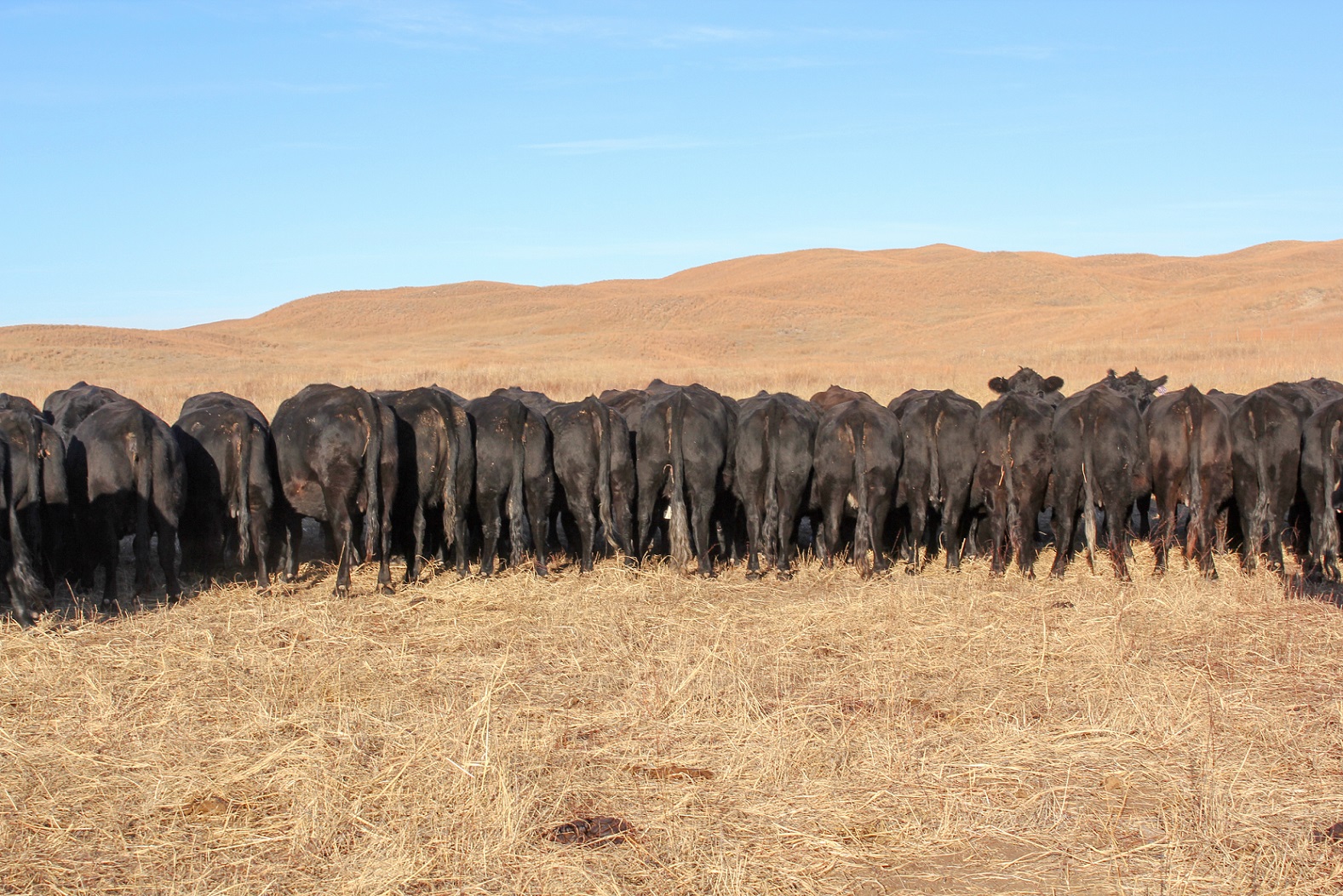Don’t risk abortions this winter: Double check your cow herd vitamin A supplementation plans

Listen to a discussion of the content in this article on this episode of the BeefWatch podcast. You can subscribe to new episodes in iTunes or paste http://feeds.feedburner.com/unlbeefwatch into your podcast app.
Pasture mature and brown early due to drought?
If so, then don’t forget to make sure you are supplementing enough Vitamin A. Green grass has a lot of vitamin A. In fact, cows typically build up stores over the spring and summer, and those stores along with a little bit of extra supplementation, usually get them through the winter. The most common times that vitamin A deficiency start to pop up is in the winter after a summer drought. This is because brown grass and many stored forages are a poor source of vitamin A. In drought years, cows may have 8 plus months without enough dietary vitamin A to meet their needs, which can result in depleted body stores. Depleted stores can result in vitamin A deficiency symptoms, such as abortion/still births, poor breed up, diarrhea in calves and overall increases in calf sickness. Remember, for many spring calving cow/calf herds, calving occurs right at or before green grass is available, and thus at the time when cows have the lowest vitamin A status.
How much vitamin A do you need to provide to cows?
The typical vitamin A requirement is suggested to be 42,000 IU/day for a 1300 lb non-lactating cow, and when lactating, her requirement increases to 59,000 IU/d. Therefore, if you are using a 4 oz free choice mineral, it would need to contain 168,000 IU/lb for a dry cow and 234,000 IU/lb for a lactating cow. If you are planning to use a 2 oz a day mineral, then the concentrations would have to be double those listed above. These concentrations in the mineral mix assume cows are eating the targeted amount of mineral. So, if you dilute your mineral with additional salt, don’t count the extra salt in to your intake targets. You want to be sure the cows are eating the 4 or 2 oz of actual mineral mix per day. Many free choice minerals are not formulated to fully supply the cow’s needs because they are made for cattle grazing green pasture. Remember green grass is a great source. In fact, it can provide over 10 times the suggested requirement, but in drought years this is likely not the case. If you use a vitamin fortified protein cube, pellet or feed mix, take the cow’s requirement and divide it by the number of pounds you are going to feed. For example, when fed at ½ lb/d the supplement would need to contain 84,000 IU/lb to meet a dry cow’s needs (42,000 IU/d ÷ 0.5 lb/d = concentration needed IU/lb).
Stored forages as vitamin A sources?
A big challenge with hay and silage is that the vitamin A content can be quite variable. It is worth noting that fresh green hay harvested before the plant has matured, can meet 80 to 90% of a dry cow’s vitamin A requirement. However, levels in hay can vary a lot depending on maturity at harvest, drying time, as well as storage time and method. The less mature and less exposure to the sun and moisture the better. Well managed corn silage, can also be a good source of vitamin A, containing about twice as much vitamin A as green hay. However, like hay it can vary considerably. Some hays and silage, along with dormant range, and corn residue are practically devoid of vitamin A. Bottom-line, if the forage is brown or tan in color, don’t count on it to supply vitamin A. The amount of vitamin A in a drought year hay is another reason why there is an increased risk of vitamin A deficiency. The hay harvested during drought is often lower in vitamin A as plants can be dead or dormant at harvest.
Why should you change from your normal winter vitamin A supplement plan after a drought?
If you look at what you provided last winter, it may be less than the suggestion above, and you may have gotten along just fine. The key is that the cows likely had good stores of vitamin A going into winter, due to their time spent grazing green pasture, and thus could use those stores along with what was in the diet to meet their needs. This year, cow liver stores going into winter in areas affected by drought, may not be as good, and may not be sufficient to meet the cow’s needs. So, take a look at your supplement to see if it will meet your cow’s needs without depending on her to use body stores.
Interviews with the authors of BeefWatch newsletter articles become available throughout the month of publication and are accessible at https://go.unl.edu/podcast.
